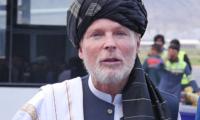A recent World Bank report, titled ‘The state of water supply, sanitation and poverty in Pakistan’, has categorically defined the ratio and causes of poverty in different provinces and districts of the country.
This report can serve as a useful guide for Pakistan’s policymakers and government representatives because it offers blueprints on what steps ought to be taken to combat this menace. As per the report, many of the facts and figures have remained constant for a long time. This implies that little or no attempt has been made by the concerned authorities to get to the bottom of these issues that pose a serious threat to society. For instance, the poverty rate in the rural regions of Pakistan is 36 percent. Meanwhile, in the urban belt, the poverty rate stands is 18 percent.
Since 2001, these figures have largely remained unchanged. Drawing attention to the one of the primary causes of poverty, the report states that owing to the snail’s pace at which industrial growth has taken place in Pakistan, there hasn’t been as sharp an increase in urbanisation as many had expected. Currently, only 35 percent of the country’s total population is lives in the cities. This indicates that a large part of the population still lives in the remote rural regions of the country.
Similarly, 80 percent of the country’s poor live in rural areas. Many of them don’t have the same degree of access to the basic necessities of life, such as healthcare facilities, education, drinking water, electricity and roads, as people living in the urban areas do.
In rural areas, the enrolment rate of boys at primary schools stands 13 percent whereas the number of boys enrolled at secondary schools stands is 11 percent less than what it is in urban areas. For girls, the figures stand at 17 percent and 14 percent, respectively.
Among all the provinces, Balochistan has been declared as the poorest province of the country where 62 percent of the total population face extreme deprivation and live below the poverty line. In Sindh, there is huge gap in the quality of life between the rural and urban population, which is estimated to be around 30 percent. In Punjab and Khyber Pakhtunkhwa, this figure stands 13 percent and 15 percent, respectively.
If someone wants to see this gap between the rural and urban population, he wouldn’t have to go too far. These disparities can be observed if we compare the standard of life in Karachi with living standard in villages that are situated near the city. While travelling toward Thatta via the National Highway, we realise that the villages along both sides of the highway lack proper schools, health centres and safe drinking water facilities. The situation becomes worse when we visit remote villages of the province where people don’t even have access to reach cities. In our modern age, there are hundreds of villages in Sindh where people have never seen Karachi or Hyderabad. They don’t even have any idea about what large cities look like. The situation in Balochistan is not too different from Sindh.
Report also reveals that Abbottabad is Pakistan’s richest district where poverty rate is only 5.8 percent while Balochistan’s Washuk district is the country’s poorest district where poverty rate stands at 72.5 percent.
Most of the 40 poorest districts of Pakistan belong to Balochistan and Sindh while neither of 40 richest districts of Pakistan belongs to Balochistan. Karachi and Hyderabad are only two districts of Sindh in the list of Pakistan’s 40 richest districts. Karachi is ranked third among the richest cities of the country while Lahore is ranked sixth in the same list.
A majority of the country’s poor population lives in well-off cities like Karachi, Lahore and Faisalabad. The poverty rate of Karachi is only 8.9 percent. But overall, the city bears the burden of 2.5 percent of the country’s poor. Meanwhile, Lahore’s poverty rate is 2.2 percent. If the poor population of these two cities is combined, it will be equal to the population of 10 of the poorest districts of the country where the poverty rate is six or seven times more than these cities.
The report states that Sindh and Balochistan are poorer than Punjab and KP. Sindh’s rural population typically depends on agriculture and the other fields related to the agricultural sector. But for a long time, the sector is in a critical state owing to some adverse techniques or manmade practices used by locals as well as the lack of attention received by government entities.
In 2013, the World Bank issued a report regarding the agricultural crises in Sindh. It stated: “Since 1999, the per capita income of Sindh’s rural population has been decreasing to 0.5 annually”. The prime reason behind such a menace is the old-fashioned feudalistic approach of local landlords in delaying access to modern-day agricultural techniques. As a result, the per acre income becomes almost next to nil. In addition, the unavailability of water in many districts of the province to cultivate land is also a factor that affects this sector. In the coastal belt of the province, sea intrusion has been playing a lethal role in destroying the agricultural prospect of the region. Thatta, Sujawal and Badin has been prone to such sea intrusions for years. As a consequence, hundreds of acres of productive in these three districts have become totally infertile.
In addition to this mega threat, the lack of access among the rural population to basic facilities such as education, healthcare, safe drinking water and sanitation have made their lives all the more difficult. Under such perilous circumstances, it comes as no surprise that Punjab and KP provinces are comparatively richer than Sindh.
Most of these problems can still be solved by the government. But they require sincere attention and the willingness to act promptly in light of findings mentioned in the World Bank’s recent report.
The writer is a freelance contributor and social activist based in Badin, Sindh.
Email: abbaskhaskheli110@ gmail.com
Prolonged slowdown erodes credibility of Pakistan’s IT sector on the global stage
Role of UN in peacekeeping must also be strengthened to ensure stability in region
America’s economic and technological prowess is rooted in its willingness to embrace risk, foster innovation, and...
Contributions of countless other women go unnoticed and unacknowledged year after year
Joyous gatherings, poetic expressions, and cultural rituals that revolved around water are now echoes of distant past
Most lawyers expect massive backlash within Supreme Court, reaction was far more muted than anticipated







